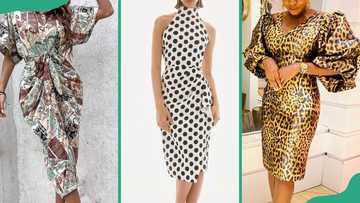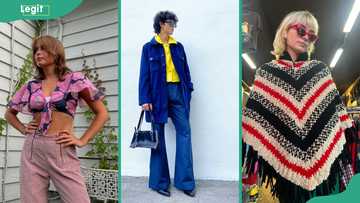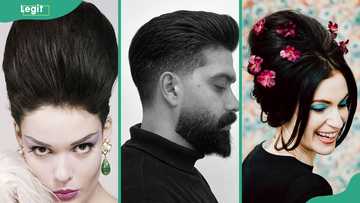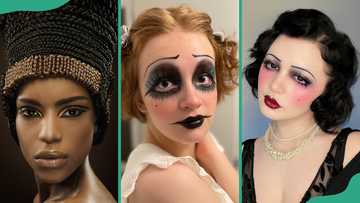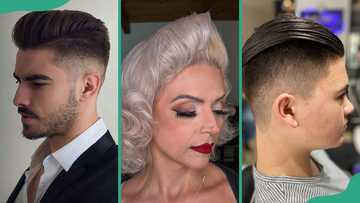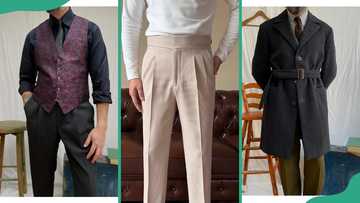A look at 1950s men's fashion staples, from Ivy League to greasers
The 1950s marked a bold shift in men’s fashion, where style became a statement of identity. From Ivy League polish to greaser rebellion, chinos and varsity sweaters clashed with leather jackets and cuffed jeans. With a modern twist, these vintage styles continue to shape contemporary fashion.
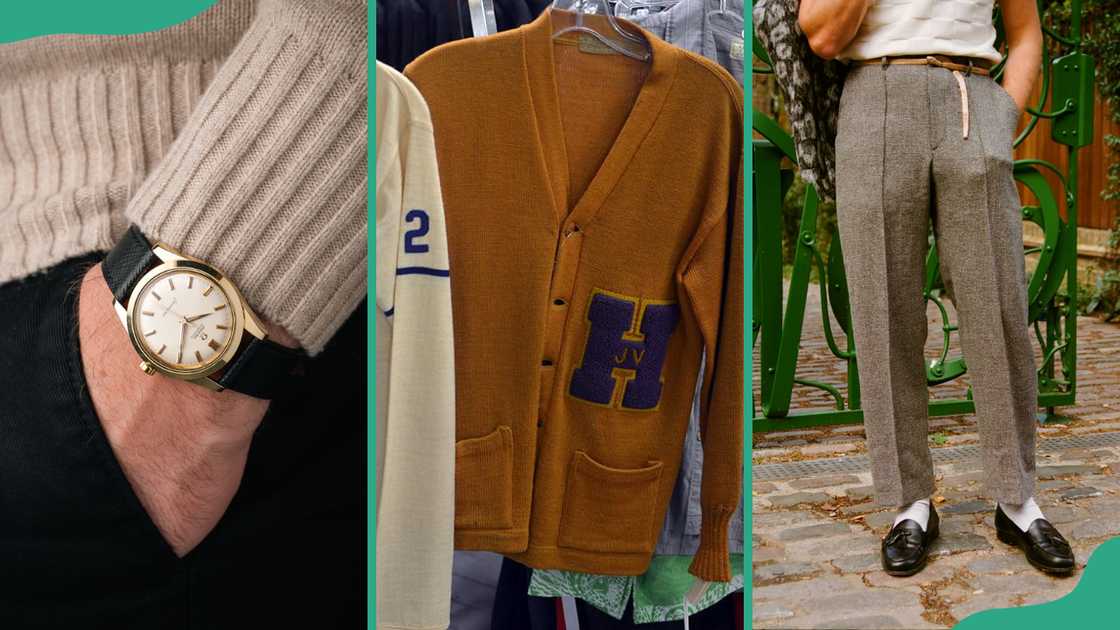
Source: UGC
TABLE OF CONTENTS
Key takeaways
- 1950s men's fashion captured a cultural shift, from the uniformity of the postwar era to the rise of youthful defiance and personal expression.
- Casual 1950s men’s fashion included T-shirts, bowling shirts, chinos, or cuffed jeans, and classic shoes like loafers or sneakers, all contributing to a relaxed, stylish vibe.
- Accessories such as fedora hats, pocket squares, skinny ties, tie clips, leather belts, cufflinks, and polished leather shoes completed the polished look.
1950s men's fashion staples that defined the decade
In the 1950s, men’s fashion split between the polished Ivy League look and the rebellious greaser style, each reflecting the era’s values and cultural shifts. Here are the key staples that defined this iconic decade.
Ivy League style staples
Rooted in elite campuses, the 1950s Ivy League style reflected discipline, tradition, and refined taste. These are the signature pieces that brought the look to life.
Oxford shirts

Source: UGC
Oxford shirts were a staple of 1950s men's formal fashion. A staple of the Ivy League look, these button-down cotton shirts, typically in white or pastel tones, were prized for their durability and crisp style. Paired with chinos or blazers, they nailed the collegiate style of the era.
Polo shirts

Source: UGC
Polo shirts were a standout in casual 1950s men’s fashion, shaping the relaxed side of the Ivy League look. With soft collars, short sleeves, and buttoned necklines, they offered a polished yet laid-back style, ideal for weekends, sports, and campus life.
Sweater vests and cardigans

Source: UGC
Popular among Ivy League students, these pieces added both warmth and a scholarly edge to any outfit. Layered over collared shirts, they provided a refined, academic look that balanced comfort with sophistication.
Blazers and sports coats
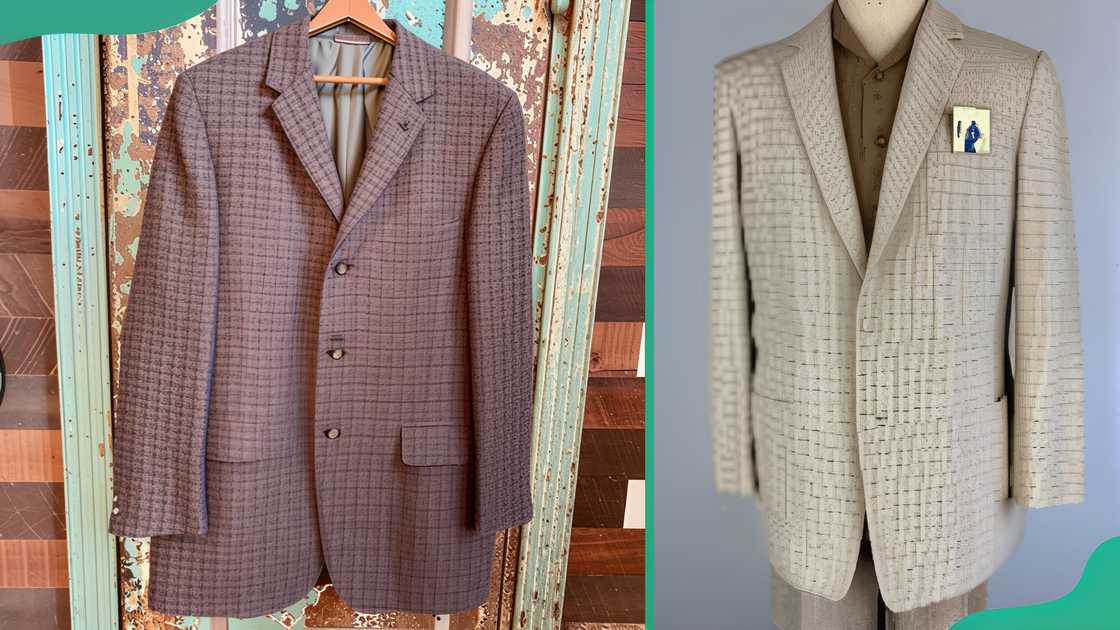
Source: UGC
Blazers and sports coats defined Ivy League style in the 1950s, offering a polished yet relaxed alternative to traditional suits. Typically crafted from wool or tweed in muted tones, they were paired with Oxford shirts and chinos to create a smart, collegiate look.
Chinos and khaki trousers

Source: UGC
Chinos and khakis were go-to pants in the 1950s Ivy League fashion. Comfortable yet sharp, they added a refined touch to casual wear when paired with polos, sweaters, or blazers. Their timeless appeal continues to make them wardrobe staples today.
Penny loafers
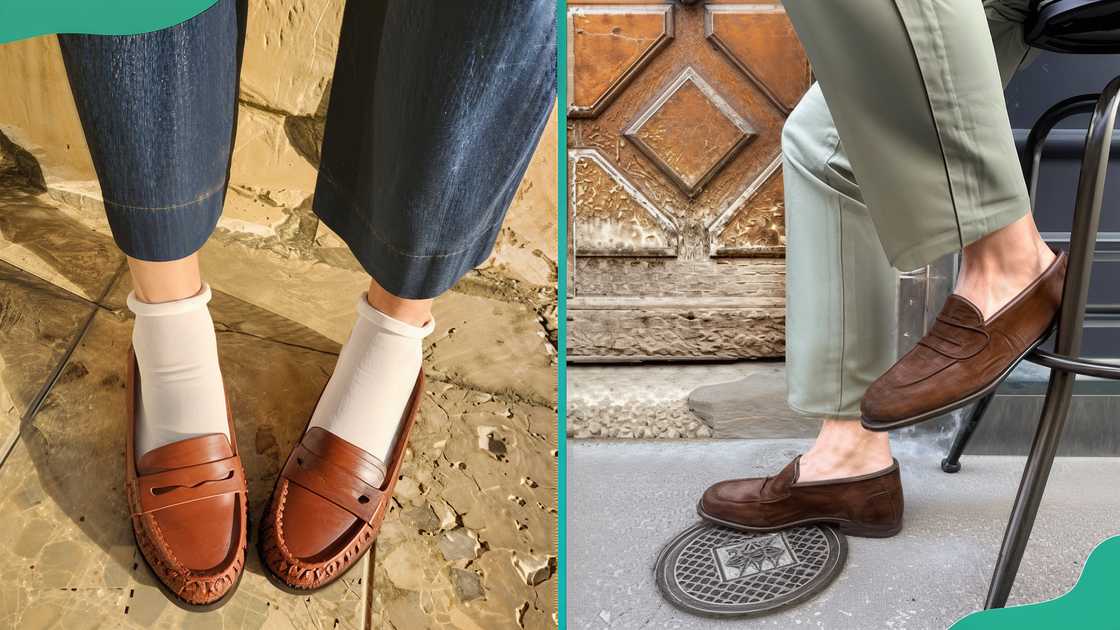
Source: UGC
Sleek, timeless, and easy to wear, these slip-on shoes became an Ivy League icon. With their signature front slot, often holding a penny for luck, they added a refined, collegiate touch to both casual and formal outfits.
Saddle shoes
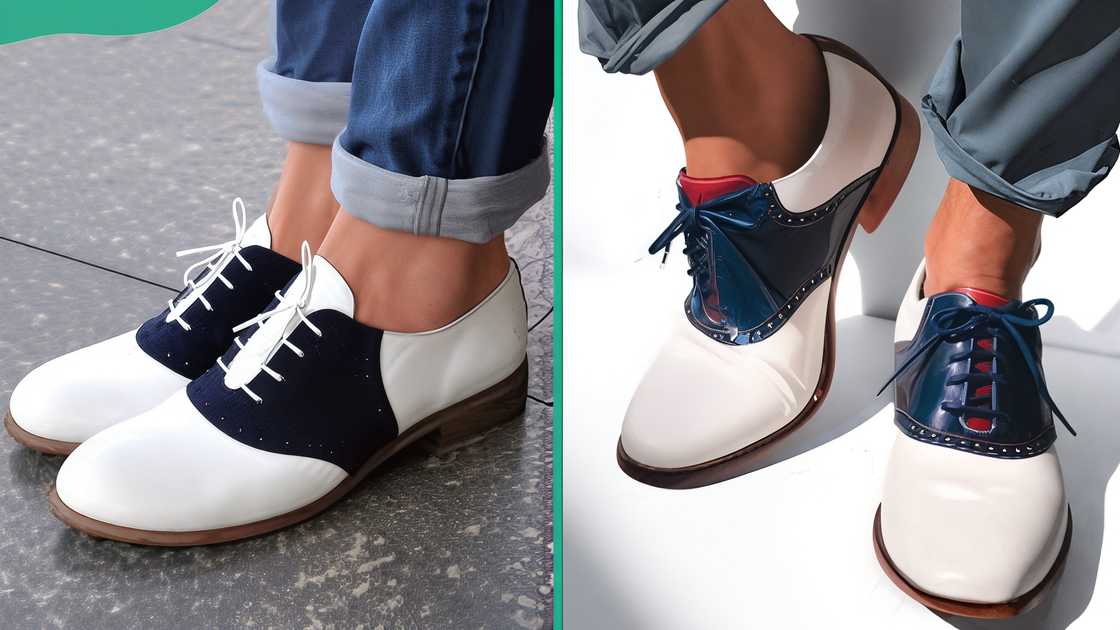
Source: UGC
With their signature two-tone design, saddle shoes were a popular laid-back choice among students. Paired with chinos or cuffed trousers, they added ivy-inspired charm and youthful flair to everyday looks.
Slim neckties

Source: UGC
A defining accessory of 1950s menswear, slim neckties complemented the era’s sleek, tailored silhouettes. Often crafted in solid colours or subtle patterns such as stripes and small dots, these narrow ties brought a sharp, modern edge to dress shirts and blazers.
Letterman jackets
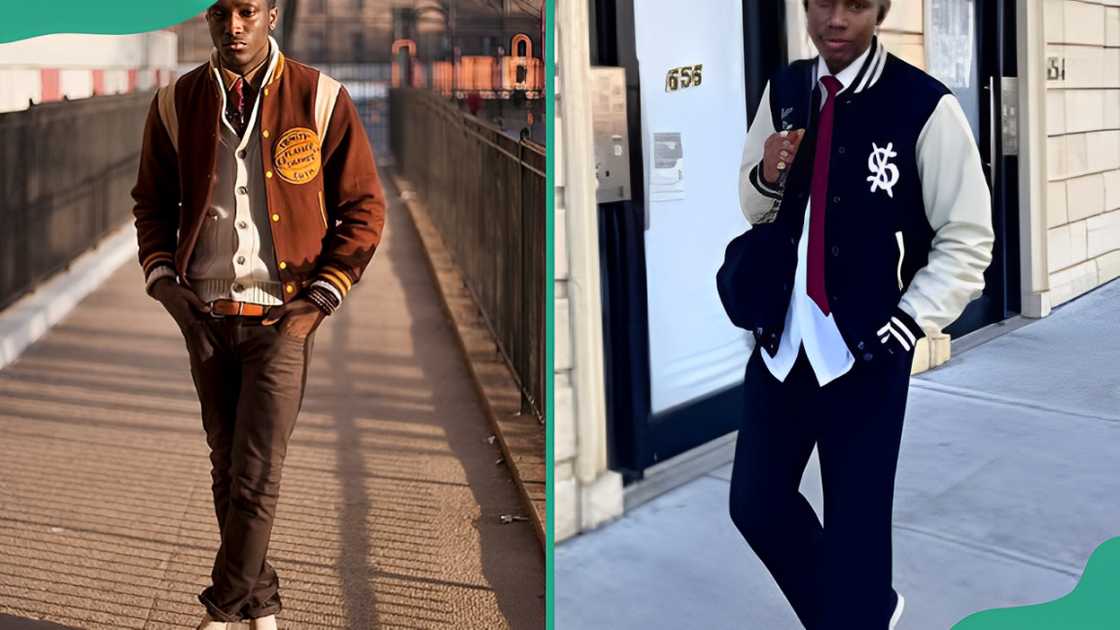
Source: UGC
Worn with pride by student athletes, letterman jackets were more than just outerwear—they were symbols of achievement and school spirit. Featuring wool bodies, leather sleeves, and bold varsity letters, these jackets brought a sporty, all-American edge to Ivy League fashion.
Flat caps and fedoras
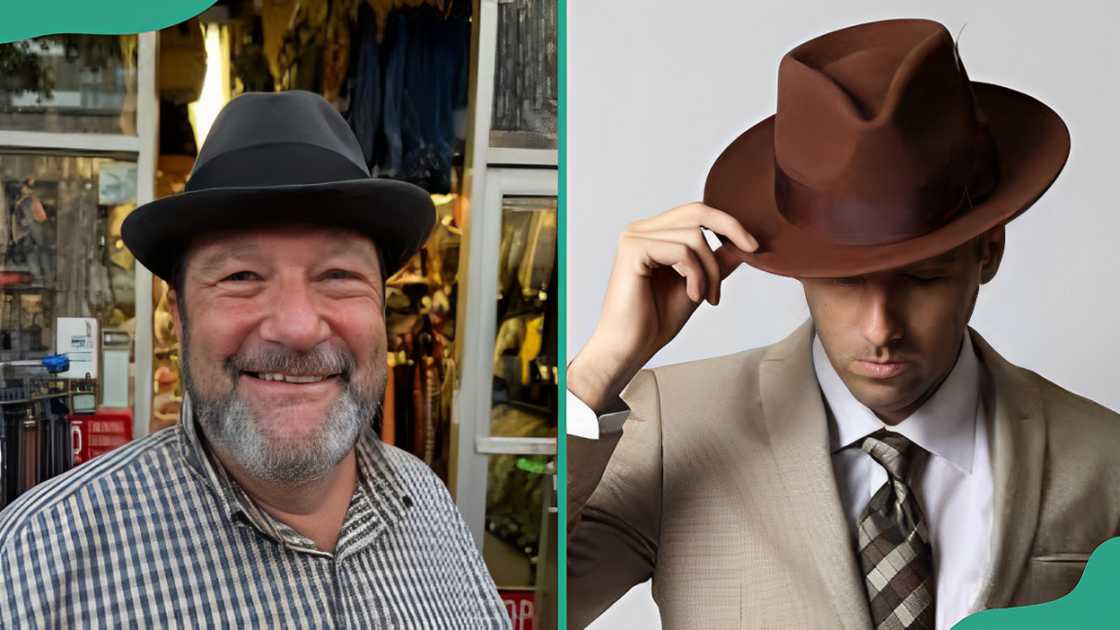
Source: UGC
While the popularity of hats began to wane in the 1950s, classic styles such as flat caps and fedoras continued to feature in Ivy League fashion. Flat caps offered a more casual, collegiate vibe, often paired with tweed jackets or sweaters, while fedoras added a sense of mature refinement to more formal outfits.
Classic leather belts and wristwatches

Source: UGC
Leather belts, typically in black or brown, provided structure and polish, often chosen to match shoes for a coordinated appearance. Wristwatches, sleek and minimal, not only served a practical purpose but also conveyed a sense of punctuality and personal discipline.
Greaser style staples
The 1950s greaser look was a bold blend of rebellion and edge, shaped by rock 'n' roll, motorcycles, and working-class roots. Here are some of the defining styles that captured its gritty attitude.
White crewneck T-shirts
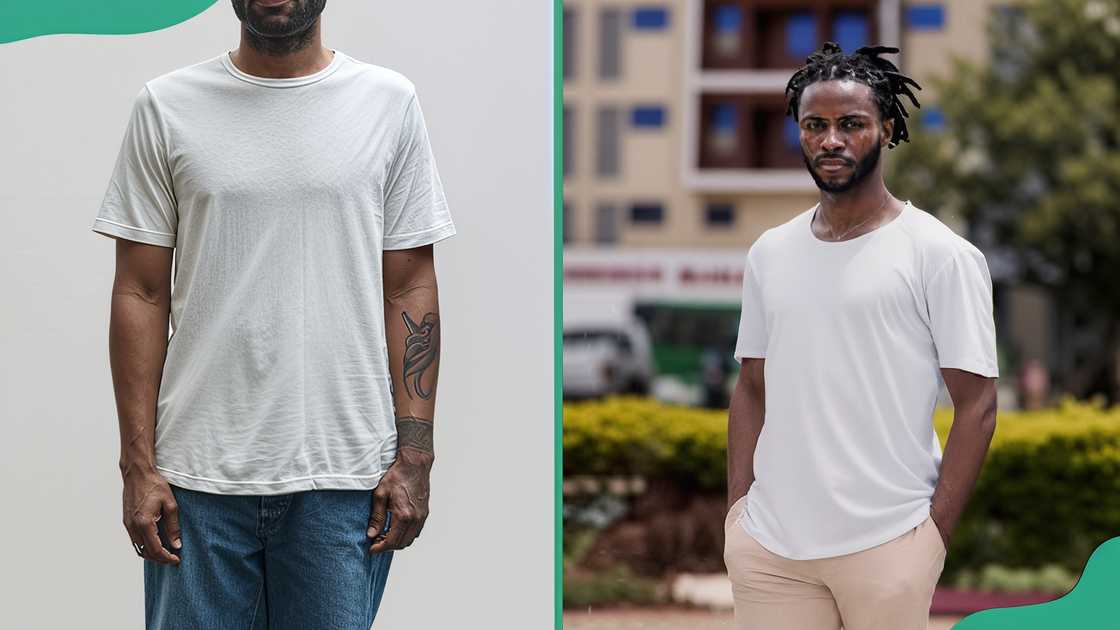
Source: UGC
Simple yet iconic, the plain white tee became a powerful symbol of rebellion in the 1950s. Made famous by icons like Hollywood actors James Dean and Marlon Brando, it broke from formal dress codes, symbolising youthful defiance and rugged, greaser-style masculinity.
Leather biker jackets
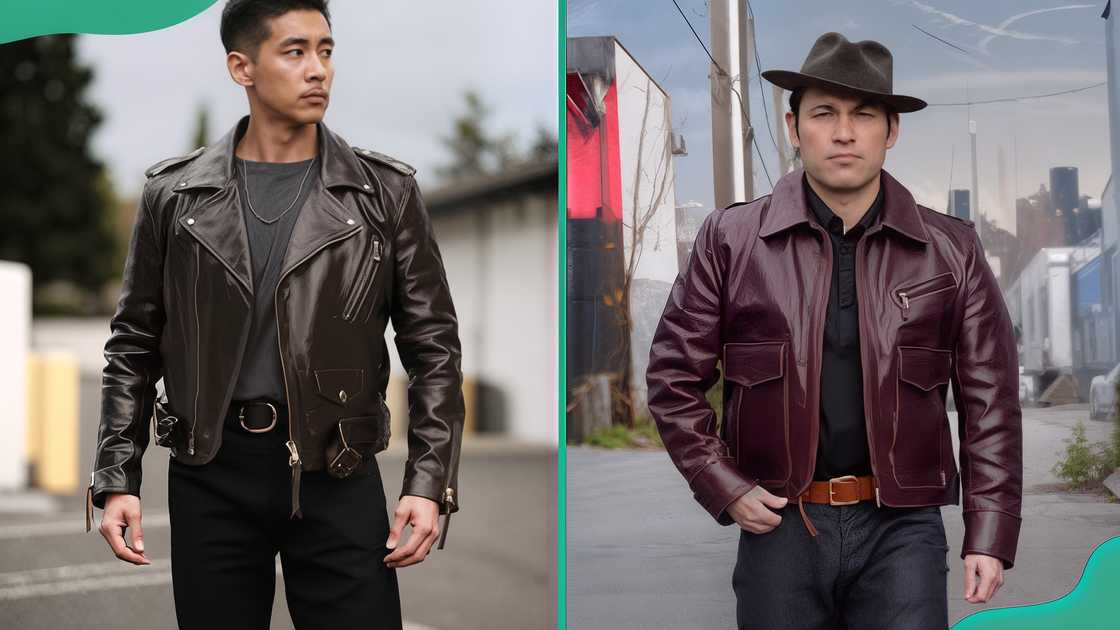
Source: UGC
Usually black and cropped, leather biker jackets were the defining piece of greaser style. With bold details like zippers and snap collars, they projected a tough, rebellious image. Popularised by figures like actor Marlon Brando.
Denim jackets

Source: UGC
Tough and timeless, denim jackets gave greasers a rugged option for layering. With their sturdy fabric and worn-in appeal, they added grit and texture to the look, reinforcing a laid-back, rebellious attitude rooted in working-class style.
Cuffed blue jeans

Source: UGC
Cuffed blue jeans were a signature of 1950s greaser style, worn low and rolled at the ankles for a tough, effortless look. Favoured by working-class youth, they symbolised rebellion, resilience, and a rejection of polished norms. Paired with tees, boots, or leather jackets, they embodied the decade’s rebel cool.
Work boots or black leather shoes

Source: UGC
Solid and stylish, these shoes anchored the greaser’s tough aesthetic. Work boots added a rugged, hard-edged feel, while black leather shoes offered a sleeker look, often chosen for a night outfit. Both matched the bold, rebellious energy that defined the style.
Flannel or plaid shirts

Source: UGC
Flannel and plaid shirts gave greaser outfits a classic, rugged feel rooted in working-class culture. Whether worn open over a T-shirt or buttoned up for a more put-together look, they offered warmth, comfort, and a hint of rebellion.
Chain wallets
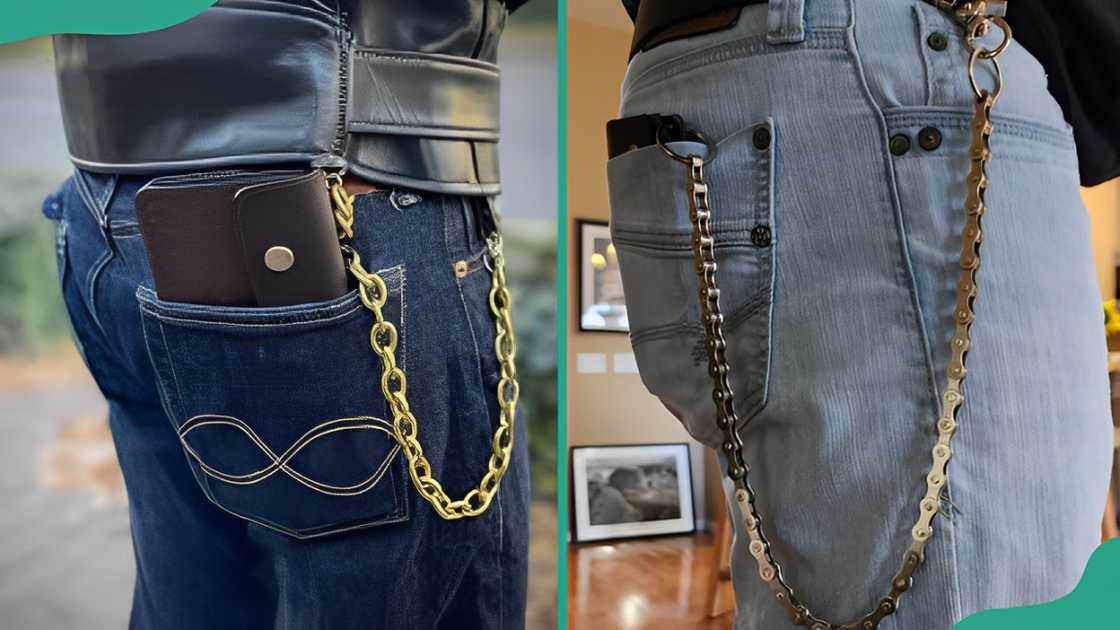
Source: UGC
Among the standout 1950s men’s fashion trends, chain wallets became a signature element of the greaser look. Clipped to a belt loop and swinging at the side, they were both practical and stylish, keeping wallets secure while adding a bold, rebellious edge that defined the era’s attitude.
Slicked-back hair (Pompadours)
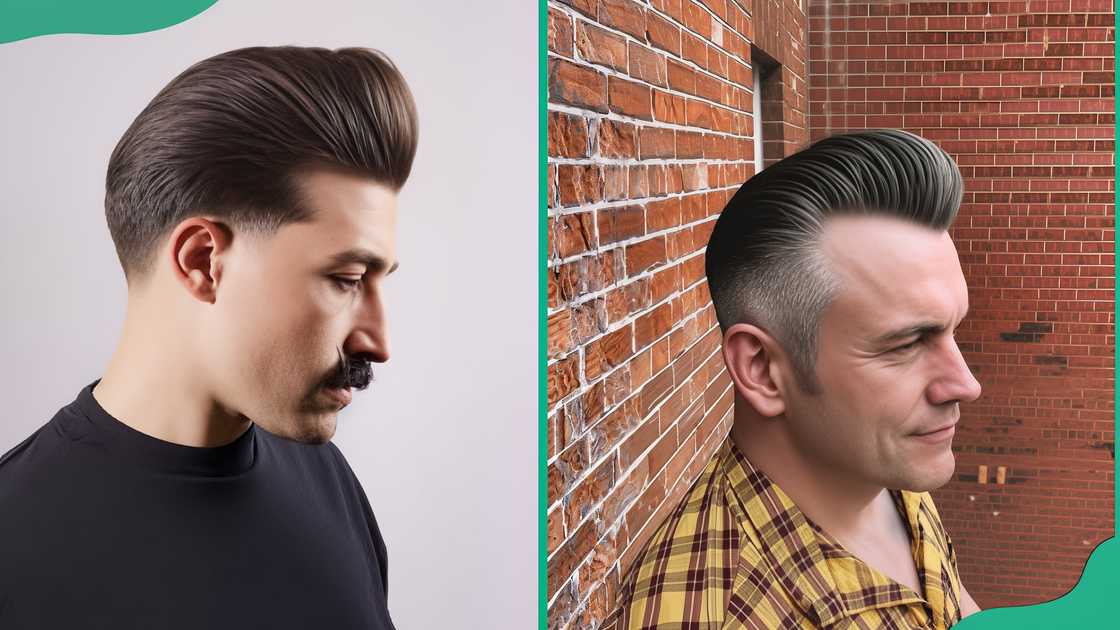
Source: UGC
Slicked-back hair and pompadours were among the most iconic 1950s hairstyles for men. A signature of greaser style, the pompadour was all about volume, shine, and attitude. The hair was combed up and back, with the sides slicked tightly, and the top styled high, using plenty of pomade for hold and gloss.
Ray-Ban Wayfarer sunglasses
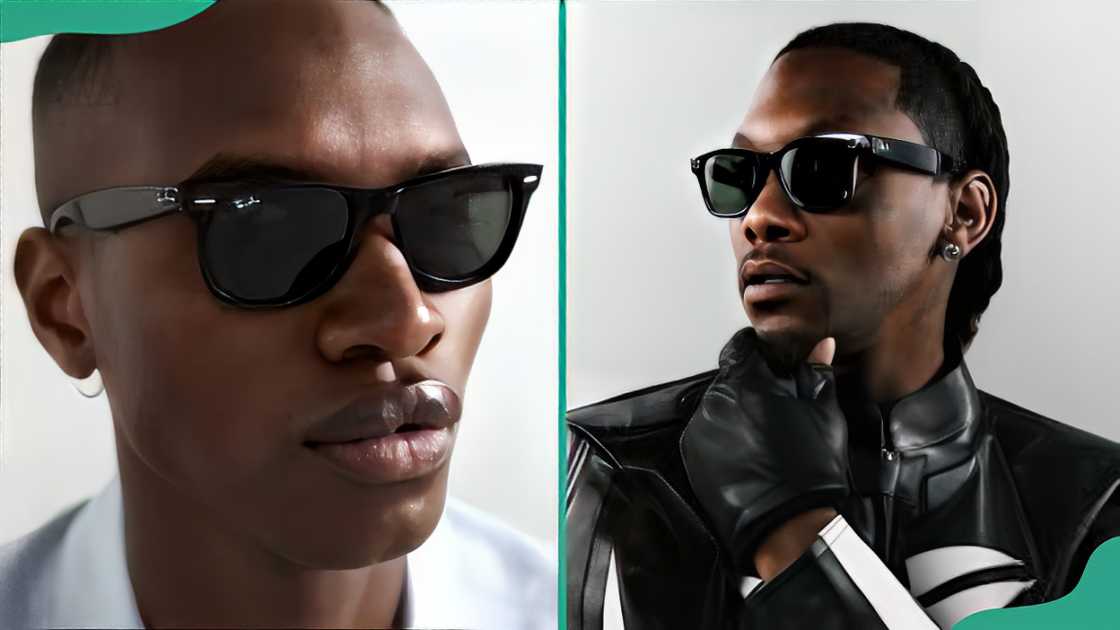
Source: UGC
These classic shades were a greaser favourite, known for their bold frames and dark lenses. They added a cool, mysterious vibe and sharpened the rebellious look. Made famous by icons like James Dean, Wayfarers became a defining accessory of greaser style.
Rolled sleeves and jeans

Source: UGC
Rolling up your shirt sleeves and the bottoms of your jeans wasn’t just about fashion. It showed a cool, tough attitude. This small style choice made someone look ready to get things done, like a hardworking guy who doesn’t mess around.
What did men wear in the 1950s?
In the 1950s, men wore button-down shirts, high-waisted trousers, sweaters, and loafers for a clean, classic look. Suits with narrow ties and fedoras were common for a formal outfit. Younger men often adopted the greaser style, wearing white T-shirts, cuffed jeans, leather jackets, and slicked-back hair.
How to look like a 1950s man
The 1950s were all about sharp style and effortless cool. Here’s how to recreate that timeless look today.
- Choose your style: For a polished Ivy League look, go with a button-down shirt, tailored trousers, and loafers. Try the greaser style with a white T-shirt, cuffed jeans, a leather jacket, and boots.
- Style your hair: Use pomade to create a slicked-back or high-volume pompadour. Comb it up and back for that signature 1950s shape.
- Add accessories: Top it off with a pair of Ray-Ban Wayfarer sunglasses for that cool, mysterious edge.
- Own the attitude: Confidence is key, carry yourself with laid-back charm or quiet rebellion, depending on your look.
What was the most popular fashion in the 1950s?
In the 1950s, men’s fashion split between the clean-cut Ivy League look and the rebellious greaser style. Ivy League fashion reflected tradition with button-down shirts, tailored trousers and loafers, while greasers embraced white tees, leather jackets, and slicked-back hair for a bold, defiant edge.
How did boys dress in the 1950s?
In the 1950s, boys wore simple smart clothes such as button-down shirts, sweaters, rolled-up jeans, and shorts. For special occasions, they dressed in trousers or suits. Older boys often wore school uniforms or letterman jackets.
With these timeless staples of 1950s men’s fashion, you can capture the decade’s daring style and effortless charm. Whether you lean toward polished Ivy League sophistication or rugged greaser edge, these iconic looks continue to inspire, defining modern cool with character and confidence.
Legit.ng recently published an article about classic 1920s men's fashion. The 1920s saw a shift from stiff, formal Victorian and Edwardian clothing to a more relaxed, stylish, and comfortable wardrobe. It emphasised tailored suits with high-waisted trousers, vests, and structured jackets.
The 1920s were a stylish decade, characterised by sleek tailoring and luxurious fabrics that epitomised sophistication and glamour. High-quality materials such as wool, linen, and tweed were popular in both formal and casual wear. Learn more about men's fashion in the 1920s in the post.
Proofreading by Kola Muhammed, copy editor at Legit.ng.
Source: Legit.ng


